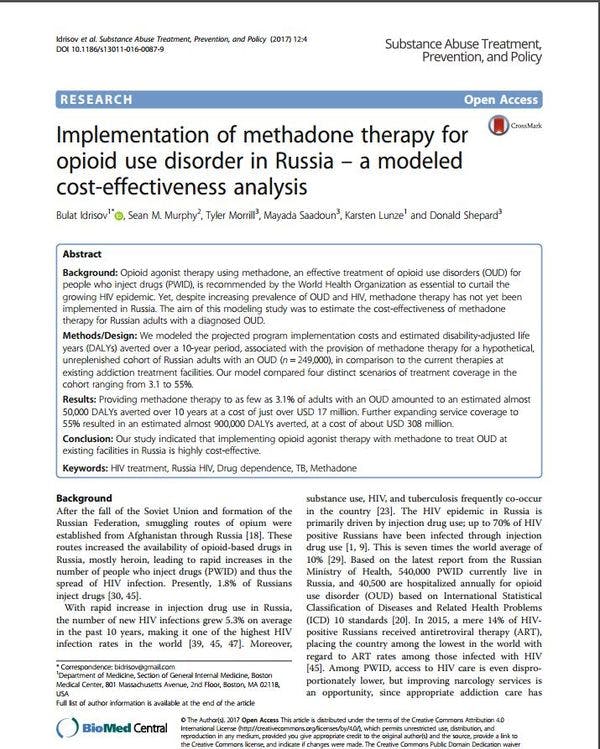Implementation of methadone therapy for opioid use disorder in Russia – a modelled cost-effectiveness analysis
Background: Opioid agonist therapy using methadone, an effective treatment of opioid use disorders (OUD) for people who inject drugs (PWID), is recommended by the World Health Organization as essential to curtail the growing HIV epidemic. Yet, despite increasing prevalence of OUD and HIV, methadone therapy has not yet been implemented in Russia. The aim of this modeling study was to estimate the cost-effectiveness of methadone therapy for Russian adults with a diagnosed OUD.
Methods/Design: We modeled the projected program implementation costs and estimated disability-adjusted life years (DALYs) averted over a 10-year period, associated with the provision of methadone therapy for a hypothetical, unreplenished cohort of Russian adults with an OUD (n = 249,000), in comparison to the current therapies at existing addiction treatment facilities. Our model compared four distinct scenarios of treatment coverage in the cohort ranging from 3.1 to 55%.
Results: Providing methadone therapy to as few as 3.1% of adults with an OUD amounted to an estimated almost 50,000 DALYs averted over 10 years at a cost of just over USD 17 million. Further expanding service coverage to 55% resulted in an estimated almost 900,000 DALYs averted, at a cost of about USD 308 million.
Conclusion: Our study indicated that implementing opioid agonist therapy with methadone to treat OUD at existing facilities in Russia is highly cost-effective.
Keep up-to-date with drug policy developments by subscribing to the IDPC Monthly Alert.
